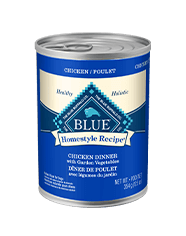There used to be two categories of Pet Parents: those who fed their pets dry food and those who opt for wet food. But today, many are choosing to mix things up by going with a little of both. You may have heard the term “mixed feeding” — combining two types of pet food (usually wet and dry) at mealtime — but did you know there’s more to it than just switching up your dog’s or cat’s routine?
Mixing wet and dry food is a great way to reinvigorate mealtime for your dog or cat and help get them excited about what’s in their bowl. If you’ve fed your furry friend the same dry or wet food for an extended period, they can understandably become bored with the same flavors and textures day in and day out. When you surprise them with a little wet food or a topper, it’s like they’re eating something brand new!
Here's another benefit that isn’t so widely known: mixing in wet food or adding a topper to dry food may increase hydration. As you might guess, wet food has much more water than dry food. Dry pet food usually contains up to 12% water, and wet food can have up to 80% water.
Cats may benefit from more hydration, so introducing a topper is a great way to add some water to their diet. By adding a cat food topper like BLUE Tastefuls Purées to your kitty’s dry food, you’re offering a more hydrating option that in turn, may help support their metabolism, energy levels, and digestion.
If the cost of switching to wet pet food has stopped you in your tracks, mixed feeding is the perfect compromise! Whether you have a dog or cat, dry food is usually more cost-effective considering the number of calories in each type of food. A great place to start when mixing wet and dry food is to break up their total serving size by feeding 75% dry food and 25% wet. Make sure to follow the feeding guidelines on each package of your pet’s food when figuring out portions. Those guidelines are there to help you maintain — and not exceed — your best friend’s daily caloric intake.
It's been said that cats prefer toppers over mixing wet and dry food, but you know your cat best so you two can be the judge of that. If you’re feeding a supplemental topper that’s not meant to be a meal, make sure the topper doesn’t exceed 10% of your cat’s daily caloric needs. With mixed feeding, you won’t need to buy enough wet food for full meals — you can add it in when it feels right, and make each package of wet food last longer.
Now that you know how beneficial mixed feeding can be for your furry friend, why not have some fun and try it out? We’ve built some veterinarian-approved recipes that are easy to follow and sure to please the pickiest of eaters.

Chicken Pot Pie for Pups
- Scoop ½ serving of BLUE Life Protection Formula Chicken & Brown Rice Recipe into a bowl
- Mix in ½ serving of BLUE Homestyle Recipe Chicken Dinner with Garden Vegetables
- Garnish with a BLUE Nudges Jerky Cuts Chicken Recipe treat and finish with a side of belly rubs
Always refer to the feeding guidelines on each package to be sure to meet and not exceed your best friend’s daily caloric intake.




